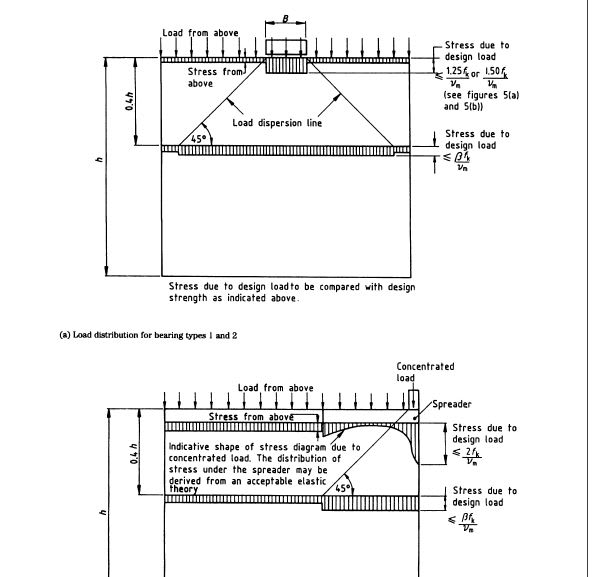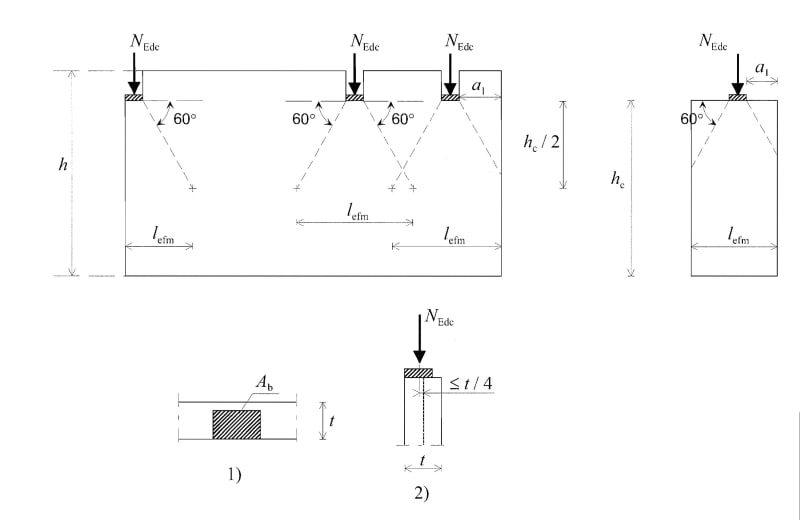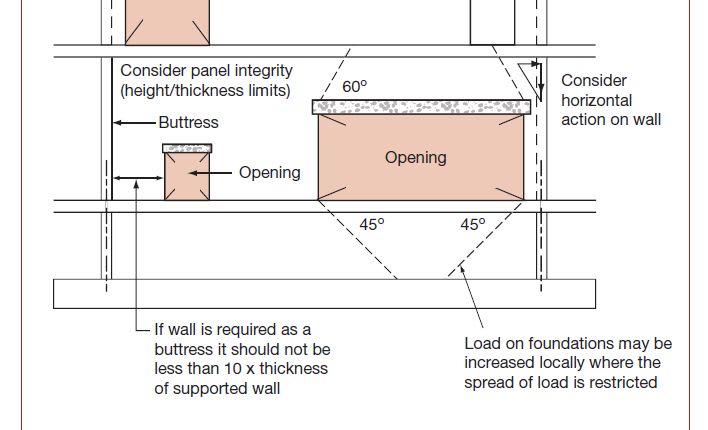Josha456
Structural
- Apr 19, 2021
- 11
Hi,
I have a question regarding the general angle that should be taken to distribute loads through masonry for the purpose of designing structure lower down the wall. I have looked online but cannot find a specific reference to this, EC6 6.1.3 shows a 60° spread below a concentrated load, however this is a specific case that refers to determining the stress used to design the wall panel for buckling, in BS 5628 section 30 a 45° angle is used to perform the same calculation. This leads me to suspect that these angles are refering to this specific check rather than a general load spread.
The angle would appear to be either 60° or 45°, i wonder if the particular bond used is the determining factor (spreader bond might be 45° but english bond 60° to account for the header course)? this is just a guess.
I would appreciate your advice.
I have a question regarding the general angle that should be taken to distribute loads through masonry for the purpose of designing structure lower down the wall. I have looked online but cannot find a specific reference to this, EC6 6.1.3 shows a 60° spread below a concentrated load, however this is a specific case that refers to determining the stress used to design the wall panel for buckling, in BS 5628 section 30 a 45° angle is used to perform the same calculation. This leads me to suspect that these angles are refering to this specific check rather than a general load spread.
The angle would appear to be either 60° or 45°, i wonder if the particular bond used is the determining factor (spreader bond might be 45° but english bond 60° to account for the header course)? this is just a guess.
I would appreciate your advice.



